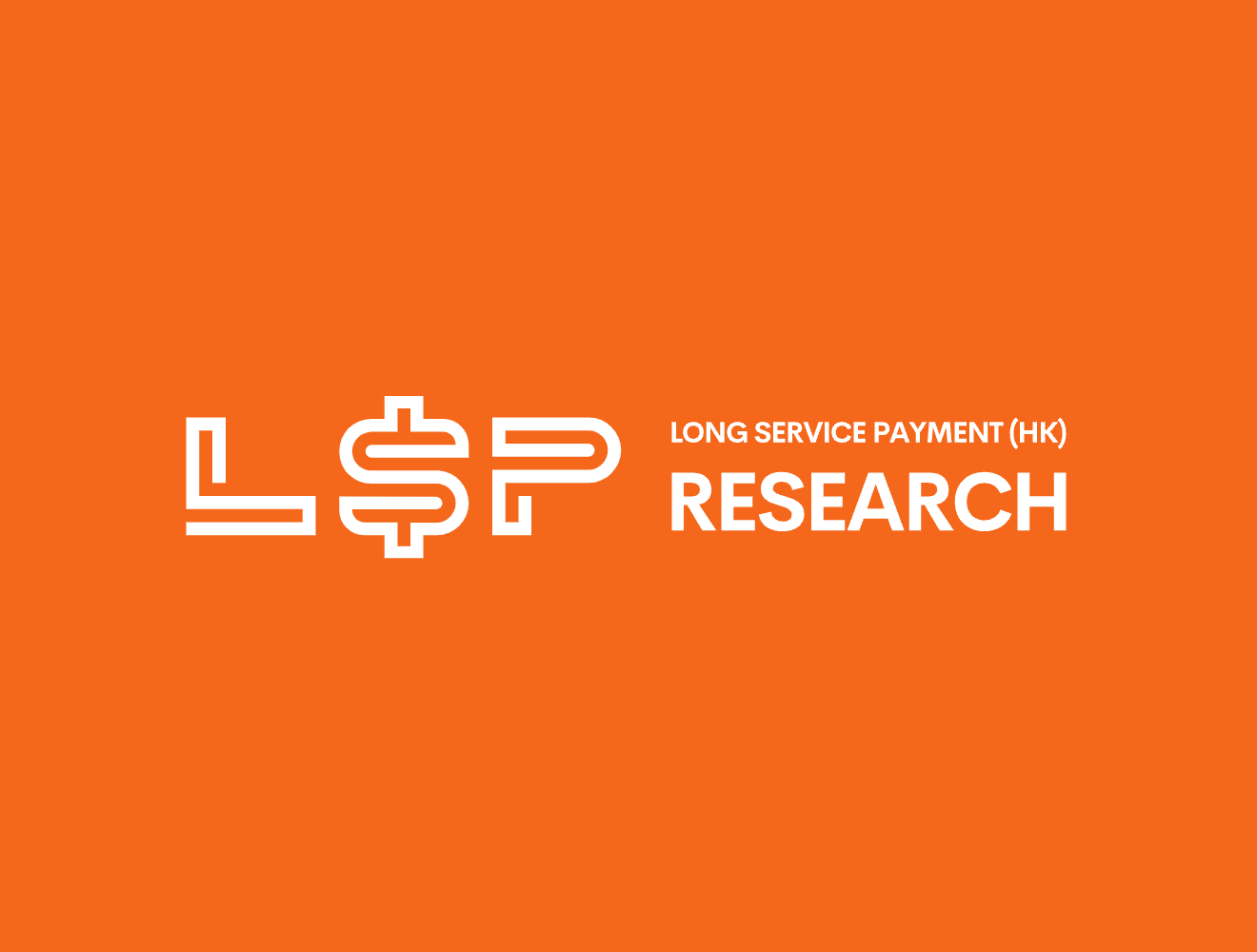Actuarial LSP Calculator
- Verified by actuarial experts
- Accredited by PIE’s auditors
- High confidentiality (cybersecurity)
- User-friendly interface
You can streamline your LSP assessments with ease by signing up for 'LSP Valuation'!
Accredited by PIE Auditors
Satisfied Clients
Assessed employees
Why Clients Trust Us
With years of professional experience, combined with innovative technology and actuarial expertise,LSP Platform provides LSP valuation solutions to clients across various industries.
Accredited by PIE Auditors
Satisfied Clients
Assessed employees
Abolition of the MPF offset
LSP valuation is required under accounting standards like HKFRS, IFRS, and GAAP. Compliance and strategic decision-making are crucial for organizations. The recent abolition of the MPF offset highlights the need for accurate and timely LSP valuations, affecting employee benefits and liabilities.
We deliver actuarially robust Long Service Payment (LSP) assessments, ensuring accuracy and alignment with the latest regulatory and accounting standards—empowering your business to navigate compliance with agility and confidenc.


Before Abolition
Offsetting Arrangement: Employers could use accrued benefits from their Mandatory Provident Fund (MPF) contributions to offset their liabilities for LSP

After Abolition
No Offsetting: Employers will no longer be allowed to use mandatory MPF contributions to offset LSP and SP liabilities for employment periods starting from the transition date (May 1, 2025).

Who Is Affected?
All companies employing individuals who contribute to the MPF are impacted by the changes in accounting treatment for Long Service Payments (LSP).

Before Abolition
Before Abolition

After Abolition
After Abolition

Who Is Affected?
Who Is Affected?
Impact on Accounting

Impact on Accounting
P&L Statement:
The P&L statement will be affected due to remeasurements of the net defined benefit liability related to LSP, which are recognized in Other Comprehensive Income (OCI). Companies with more than 20 employees need to be particularly vigilant, as the recognition of LSP can significantly alter reported expenses and net income, potentially leading to a material impact on profitability.
Statement of financial position (Balance Sheet):
The liabilities associated with the LSP obligation must be recorded on the balance sheet. This is crucial for companies with over 20 employees, as the total liabilities may increase, affecting the overall financial position and ratios used by stakeholders to assess the company's health.
Tax effect of LSP obligation

Tax effect of LSP obligation
The abolition of the offsetting mechanism between the Mandatory Provident Fund (MPF) and Long Service Payment (LSP) in Hong Kong allows companies to potentially increase their tax deductions. Under the new regulations, businesses can deduct specific provisions for LSP, including current service costs and relevant interest expenses, as long as these provisions comply with the Employment Ordinance (EO) and are based on valid actuarial assumptions. Additionally, any one-off catch-up adjustments recognized as "past service cost" due to the expected net cost of LSP obligations will also be deductible in the year they are recognized. This change enhances the ability of companies to reduce their taxable income related to LSP liabilities, thereby lowering their overall tax burden.

Impact on Accounting
P&L Statement:
The P&L statement will be affected due to remeasurements of the net defined benefit liability related to LSP, which are recognized in Other Comprehensive Income (OCI). The recognition of LSP can significantly alter reported expenses and net income, potentially leading to a material impact on profitability.
Statement of Financial Position (Balance Sheet):
The liabilities associated with the LSP obligation must be recorded on the balance sheet. This is crucial, as the total liabilities may increase, affecting the overall financial position and ratios used by stakeholders to assess the company's health.

Impact on Accounting
P&L Statement:
The P&L statement will be affected due to remeasurements of the net defined benefit liability related to LSP, which are recognized in Other Comprehensive Income (OCI). The recognition of LSP can significantly alter reported expenses and net income, potentially leading to a material impact on profitability.
Statement of Financial Position (Balance Sheet):
The liabilities associated with the LSP obligation must be recorded on the balance sheet. This is crucial, as the total liabilities may increase, affecting the overall financial position and ratios used by stakeholders to assess the company's health.

Impact on Accounting
P&L Statement:
The P&L statement will be affected due to remeasurements of the net defined benefit liability related to LSP, which are recognized in Other Comprehensive Income (OCI). Companies with more than 20 employees need to be particularly vigilant, as the recognition of LSP can significantly alter reported expenses and net income, potentially leading to a material impact on profitability.
Statement of financial position (Balance Sheet):
The liabilities associated with the LSP obligation must be recorded on the balance sheet. This is crucial for companies with over 20 employees, as the total liabilities may increase, affecting the overall financial position and ratios used by stakeholders to assess the company's health.

Tax effect of LSP obligation
The abolition of the offsetting mechanism between the Mandatory Provident Fund (MPF) and Long Service Payment (LSP) in Hong Kong allows companies to potentially increase their tax deductions. Under the new regulations, businesses can deduct specific provisions for LSP, including current service costs and relevant interest expenses, as long as these provisions comply with the Employment Ordinance (EO) and are based on valid actuarial assumptions. Additionally, any one-off catch-up adjustments recognized as "past service cost" due to the expected net cost of LSP obligations will also be deductible in the year they are recognized. This change enhances the ability of companies to reduce their taxable income related to LSP liabilities, thereby lowering their overall tax burden.
Smarter LSP Valuations Start Here
Say goodbye to outdated processes. Our solution combines actuarial precision with modern automation,
helping you manage compliance with ease.
Our innovative LSP Valuation Platform

Accreditation
-Calculations verified by actuarial experts
-Accredited by PIE’s auditor

Cost
-Starting from just HKD 1,800
-Competitive pricing through collaboration with a leading HR information management systems company

Confidentiality
-No personal employee information required
-Only a numeric representation for staff is needed

Ease to use
-Mastering our platform takes no more than 5 minutes if you know Excel
Pricing Plan
Non-Listed Company
Streamlined and cost-effective solution designed for private enterprises.

After 1/5/2025, post-abolition of MPF offsetting is nessary to adopted in LSP assessment.
Numbers of employee: 1-9

HKD$ 1,800
Non-Listed Company A2
Numbers of employee: 10-19

After 1/5/2025, post-abolition of MPF offsetting is nessary to adopted in LSP assessment.
HKD$ 3,500
Non-Listed Company A3
Numbers of employee: 20-49

After 1/5/2025, post-abolition of MPF offsetting is nessary to adopted in LSP assessment.
HKD$ 5,100
Non-Listed Company A4
Numbers of employee: 50-99

After 1/5/2025, post-abolition of MPF offsetting is nessary to adopted in LSP assessment.
HKD$ 6,800
Non-Listed Company A5
Numbers of employee: 100-299

After 1/5/2025, post-abolition of MPF offsetting is nessary to adopted in LSP assessment.
HKD$ 9,800
Non-Listed Company A6
Numbers of employee: 300+
Negotiate
Listed Company
Comprehensive valuation and compliance support tailored for listed companies.

After 1/5/2025, post-abolition of MPF offsetting is nessary to adopted in LSP assessment.
Listed Company B1
Numbers of employee: 1-9

After 1/5/2025, post-abolition of MPF offsetting is nessary to adopted in LSP assessment.
HKD$ 3,600
Listed Company B2
Numbers of employee: 10-19

After 1/5/2025, post-abolition of MPF offsetting is nessary to adopted in LSP assessment.
HKD$ 7,000
Listed Company B3
Numbers of employee: 20-49

After 1/5/2025, post-abolition of MPF offsetting is nessary to adopted in LSP assessment.
Listed Company B4
Numbers of employee: 50-99

After 1/5/2025, post-abolition of MPF offsetting is nessary to adopted in LSP assessment.
Listed Company B5
Numbers of employee: 100-299

After 1/5/2025, post-abolition of MPF offsetting is nessary to adopted in LSP assessment.
Listed Company B6
Numbers of employee: 300+
Negotiate

Platform User Guide
Learn how to navigate and make the most of our valuation platform with this step-by-step video guide. Get started quickly and use all features with confidence.
What clients said:



"LSP Valuation has transformed the way we handle MPF and LSP calculations. Their expert team, user-friendly platform, and seamless integration with our HR system have significantly improved our efficiency and compliance. It's a reliable solution we truly trust."
Carmen Lee
HR Director, Hong Kong-Based Corporation"LSP Valuation has transformed the way we handle MPF and LSP calculations. Their expert team, user-friendly platform, and seamless integration with our HR system have significantly improved our efficiency and compliance. It's a reliable solution we truly trust."
Carmen Lee
HR Director, Hong Kong-Based Corporation"LSP Valuation has transformed the way we handle MPF and LSP calculations. Their expert team, user-friendly platform, and seamless integration with our HR system have significantly improved our efficiency and compliance. It's a reliable solution we truly trust."

